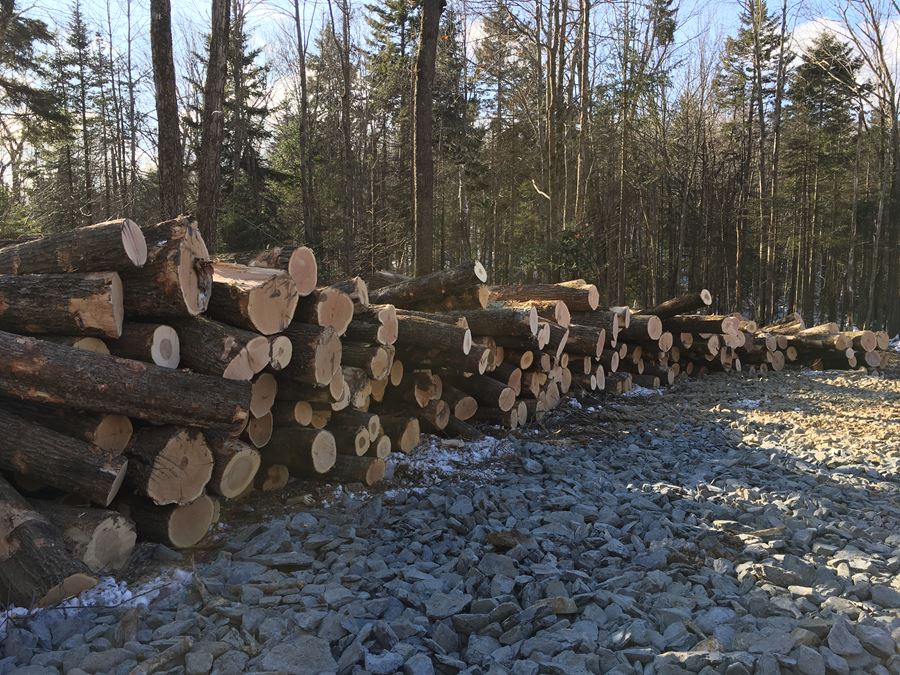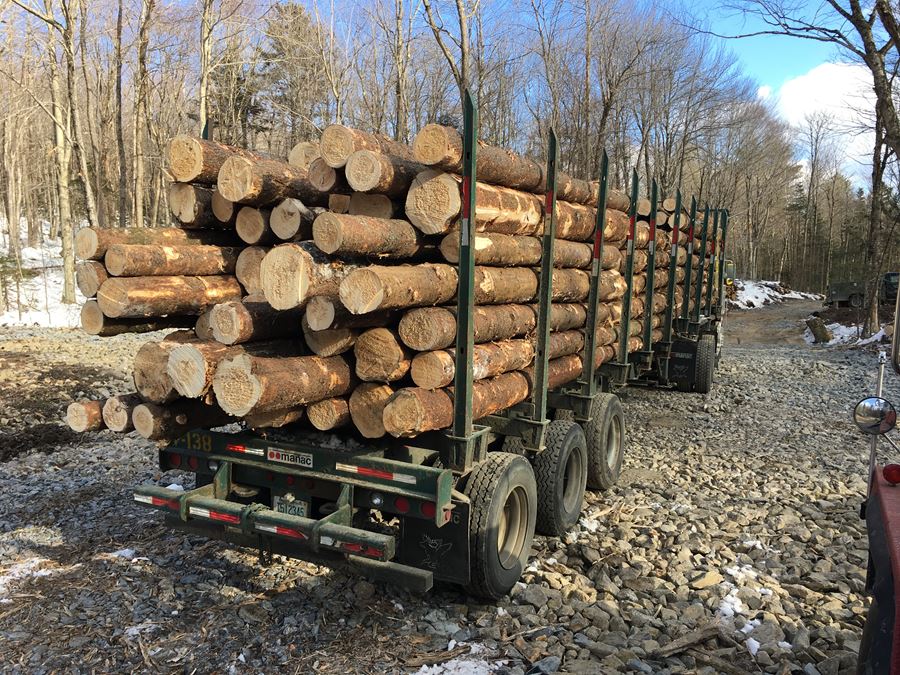New Hampshire and Vermont Timber Prices - Winter 2019
The fall of 2018 was wet. The early part of the winter of 2019 seems to be continuing the trend. At the time of this writing, northern New England weather has been a see-saw of freeze/thaw cycles…with rain being the main source of precipitation –when the thaws occur. The excessive moisture combined with lack of significant temperatures has made it tough to “freeze things in” ..out there in the woods. The silver lining to this crazy weather has been the fact that the tough conditions have resulted in a reduced output of harvested wood – leading to low inventories at mills region wide. This is helping to keep to delivered prices up.
Below is a summary of the various regional wood products, broken down by species category
Hardwood Logs :
 Hardwood saw logs, pallet and veneer prices have varied quite a bit – based upon the species. Over the course of the summer and into the fall the prices for all of the oaks dropped significantly. High tariffs placed on US export lumber by the Chinese government, coupled with low demand, really put a damper on oak prices. At the time of this writing the tariffs were supposed to have been reduced by March 1 – but it doesn’t look like the Chinese government will allow it. This will further depress oak log prices into the forseeable future. Demand for oak veneer has also taken a hit – but not to the same degree as red oak sawlogs. There continues to be strong demand for sugar maple, yellow birch and white ash sawlogs. The market for hard maple lumber tends to be more domestic and less impacted by the vagaries of global trade. However, not all maples are equal. Red maple lumber has remained flat – putting a damper on delivered prices for soft maple logs. Yellow birch prices are strong but steady, while ash shows very strong demand with prices that have trended up over the last few months. Veneer prices for the birches and maple are high and demand is strong.
Hardwood saw logs, pallet and veneer prices have varied quite a bit – based upon the species. Over the course of the summer and into the fall the prices for all of the oaks dropped significantly. High tariffs placed on US export lumber by the Chinese government, coupled with low demand, really put a damper on oak prices. At the time of this writing the tariffs were supposed to have been reduced by March 1 – but it doesn’t look like the Chinese government will allow it. This will further depress oak log prices into the forseeable future. Demand for oak veneer has also taken a hit – but not to the same degree as red oak sawlogs. There continues to be strong demand for sugar maple, yellow birch and white ash sawlogs. The market for hard maple lumber tends to be more domestic and less impacted by the vagaries of global trade. However, not all maples are equal. Red maple lumber has remained flat – putting a damper on delivered prices for soft maple logs. Yellow birch prices are strong but steady, while ash shows very strong demand with prices that have trended up over the last few months. Veneer prices for the birches and maple are high and demand is strong.
Hardwood tie logs and mat logs are in really strong demand right now. Prices have gone up significantly, from what they were a year ago. In many instances the delivered prices for mat logs are at $ 425 p/mbf. For what is essentially a large pallet log - it makes financial sense for out clients to try and generate as many of these logs when possible.
Softwood Logs:
White Pine: Demand appears to be strong and prices – for delivered logs- are steady. The mills continue to discriminate for quality…showing a preference for long logs that are knot free.
The mills will take a percentage of shorter length logs with large knots however, the price isn’t very high .
Spruce: Prices have taken a nose dive. Falling by 25% in the last six months. Higher interest rates and lower housing starts are contributing to this. Eventually the prices will rebound but in the meantime its rough sledding if you have spruce to sell.

Hemlock:
Prices are steady – as they always are with this species. Not really up nor really down. Demand continues to be strong, with the few domestic hemlock mills and the larger mills in Canada all looking to purchase it.
Hardwood Pulp:
Markets are wide open and the inventories at the mills are very low. As soon as its delivered the wood is consumed. When mud season hits shortages of wood at most of the major mills, can be expected. Despite the low inventories delivered prices have remained flat. Realizing that the lower inventories are due, in large measure, to lower production capacity many of the mills buyers figure that raising prices just bids up your fiber costs while failing to bring in any more wood.
Softwood Pulp:
Once again softwood pulp is in demand. The expansion done at the large Verso mill in Jay Maine has played a large part in the increased demand. Paper machines, at this mill, that were formerly manufacturing coated paper are now manufacturing containerboard and packaging paper. This change requires the consumption of a lot a of softwood pulp. In turn, this has moved the supply pendulum from abundance to scarcity.
Prices for delivered softwood pulp will probably go up sometime in the late spring or early summer.
Biomas Chips:
After this past summers dramatic override of the NH governors veto – the fate of biomass electricity plants in the state look better than they have in a long time. However, this is only a temporary measure and within the next five years the situation could end becoming dire again. Time will only tell. In the meantime – demand for biomass chips is strong and prices for delivered chips have even trended up slightly. The good news is – the quotas are gone and any chips produced can be sold.











